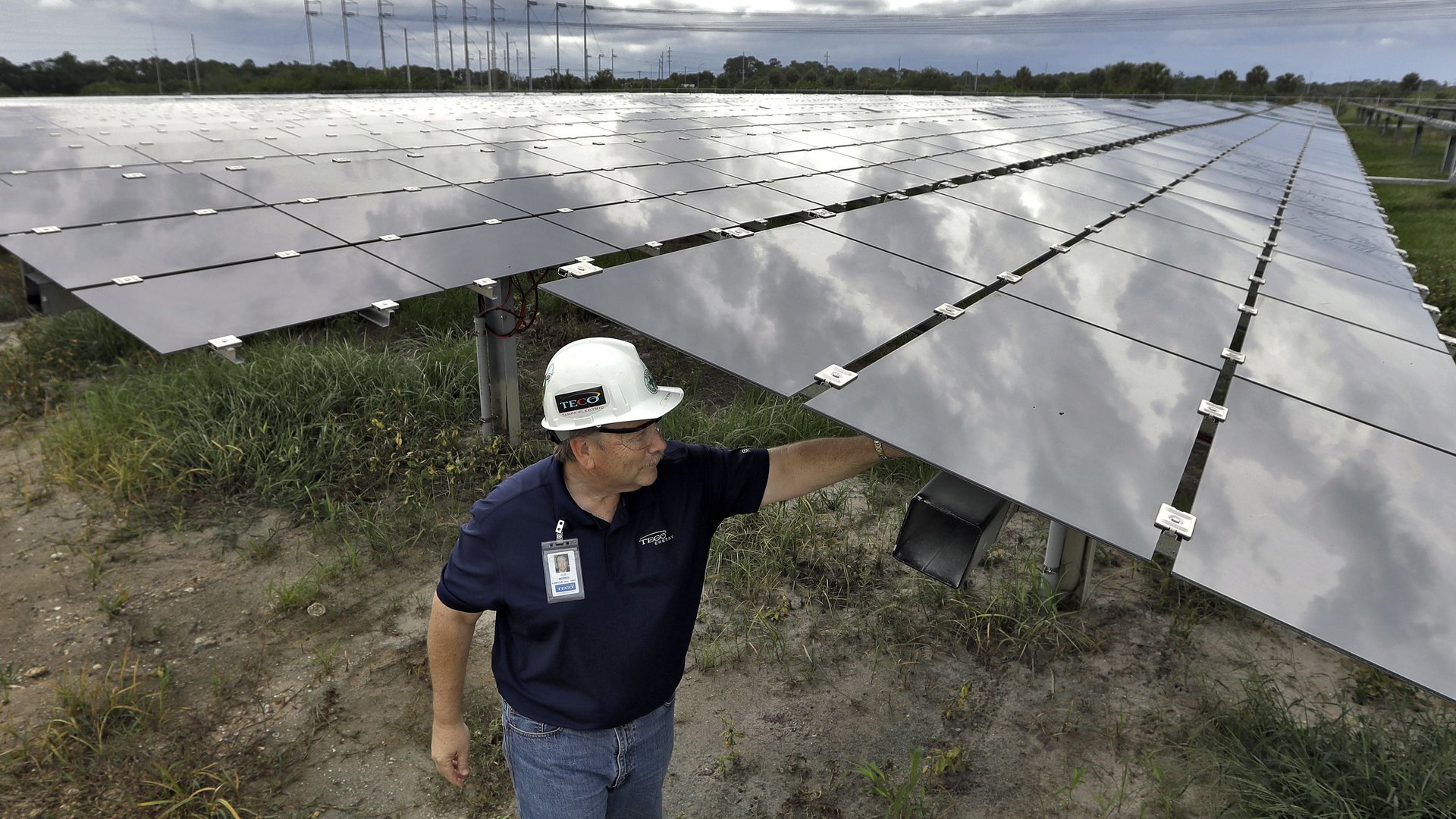Renewable energy is becoming so cheap the US will meet Paris commitments even if Trump withdraws
Research analysts at Morgan Stanley believe that renewable energy like solar and wind power are hurtling towards a level of ubiquity where not even politics can hinder them. Renewable energy is simply becoming the cheapest option, fast. Basic economics, the analysts say, suggest that the US will exceed its commitments in the Paris agreement regardless of whether or not president Donald Trump withdraws, as he’s stated he will.


Research analysts at Morgan Stanley believe that renewable energy like solar and wind power are hurtling towards a level of ubiquity where not even politics can hinder them. Renewable energy is simply becoming the cheapest option, fast. Basic economics, the analysts say, suggest that the US will exceed its commitments in the Paris agreement regardless of whether or not president Donald Trump withdraws, as he’s stated he will.
“We project that by 2020, renewables will be the cheapest form of new-power generation across the globe,” with the exception of a few countries in Southeast Asia, the Morgan Stanley analysts said in a report published Thursday.
“By our forecasts, in most cases favorable renewables economics rather than government policy will be the primary driver of changes to utilities’ carbon emissions levels,” they wrote. “For example, notwithstanding president Trump’s stated intention to withdraw the US from the Paris climate accord, we expect the US to exceed the Paris commitment of a 26-28% reduction in its 2005-level carbon emissions by 2020.”
Globally, the price of solar panels has fallen 50% between 2016 and 2017, they write. And in countries with favorable wind conditions, the costs associated with wind power “can be as low as one-half to one-third that of coal- or natural gas-fired power plants.” Innovations in wind-turbine design are allowing for ever-longer wind blades; that boost in efficiency will also increase power output from the wind sector, according to Morgan Stanley.
Even in Australia, where the political climate is hostile to renewables, Morgan Stanley sees hope in the slightly longer-term: “In Australia, we anticipate that by 2020, renewables will provide ~28% of grid-supplied energy, including over 60% in South Australia.”